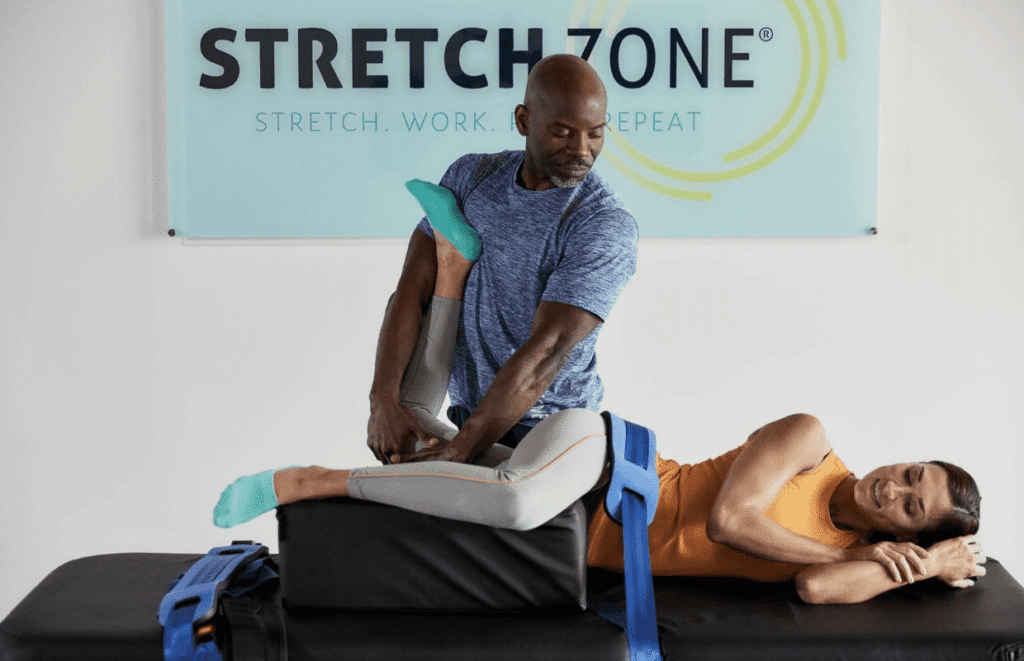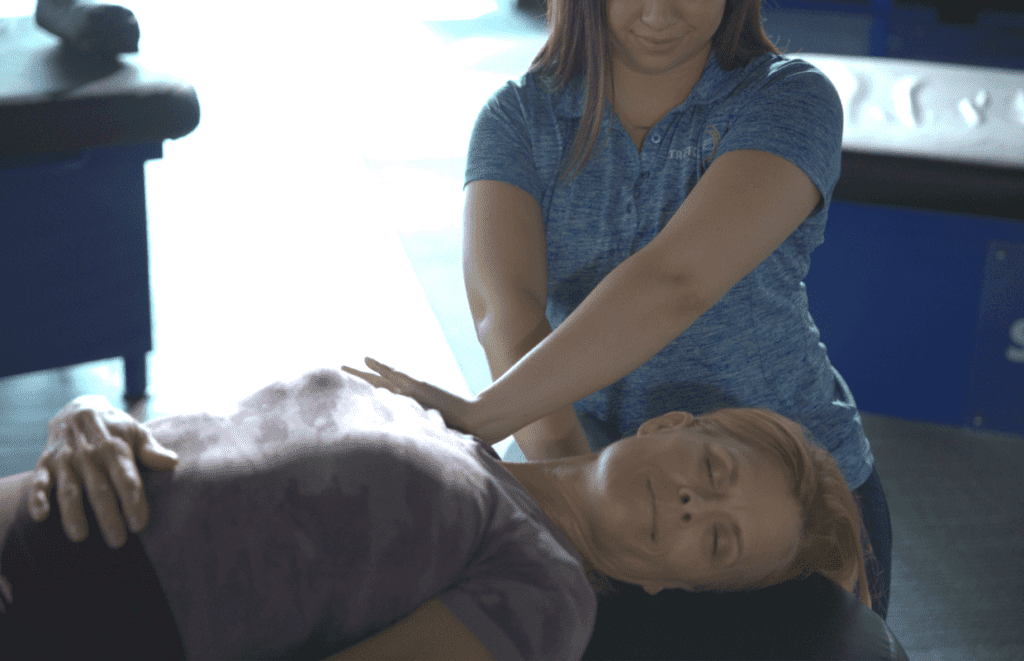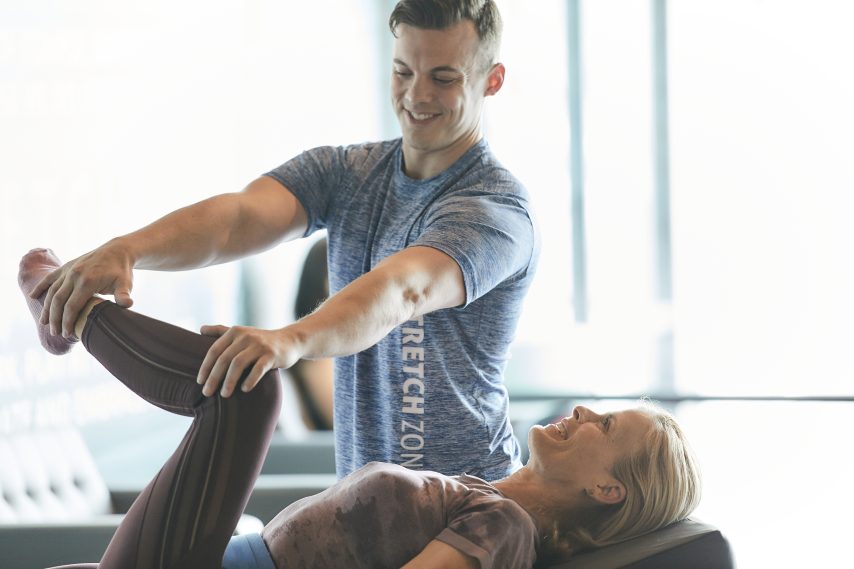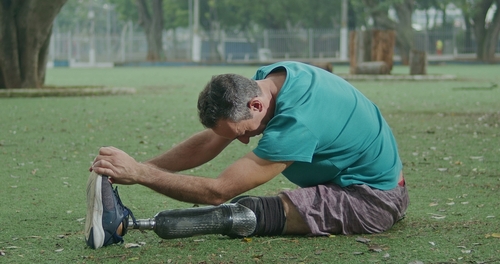Year after year, fitness fads (i.e., Barre, CrossFit, Spin, Tae Bo, etc.) have inspired people of all ages and abilities to step up their wellness efforts. It seems that the latest craze, however, is a tried-and-true workout perceived to be somewhat basic. Stretching, and more specifically practitioner assisted stretching and/or stretch therapy, is flexing its muscle as the go-to fitness trend. Stretch therapy is actively engaging a wide range of people, spanning from professional athletes to ordinary individuals (with and without disabilities).
Take Stretch Zone, the first and largest franchisor in the stretching industry. The company launched in Miami back in 2004, a time period when exercise enthusiasts were more so drawn to Zumba and other dance workouts. But Founder & Chief Stretching Officer Jorden Gold says that, after witnessing the life-altering benefits of stretching, he was prepared to do the heavy-lifting of launching his wellness company.
“The whole reason that I started Stretch Zone was sparked from watching my grandfather becoming immobile because of his diabetes. It motivated me to develop a proprietary stretching method that I hoped would prevent others from having to see themselves and the people in their lives suffer in the same way,” Gold explains.

Initially, business didn’t exactly take off. Then, in 2020 when the Covid-19 pandemic inspired some people to better prioritize health, Stretch Zone really stretched its client base to new heights. With company kinks worked out, Stretch Zone operated 100 studios by the summer of 2020, then rapidly grew to 200 fine-tuned sites by the following year and, now by summer’s end 2023, expects to have 300 locations up and running (well, stretching) nationwide.
Benefits of Stretch Therapy
“Stretching the surrounding muscles of your joints is a great way to mitigate muscle tightness and keep your joints lubricated which, in turn, stops the pop,” Gold says.
Utilizing its patented strapping equipment to improve muscle function throughout the body, the Stretch Zone method, gradually guided by a stretch-trained practitioner, is designed to isolate and stabilize muscles, helping to adjust stretch reflexes and retrain one’s nervous system to achieve optimal results.
Athletes aren’t the only ones seeking (and receiving) results. In general, all types of people may decrease risk of injury, while increasing range of motion (ROM) and overall health. For people with certain disabilities, practitioners also claim that assisted stretching can help alleviate chronic pain, improve blood circulation and energy levels, and increase flexibility, mobility and strength. Stretch therapy sessions are customized to match the ability and goals of each client.

Stephanie Hall, a publicist representing Stretch Zone, tells AmeriDisability that the company works with individuals with a variety of debilitating conditions, such as cerebral palsy, multiple sclerosis and Parkinson’s disease, with beneficial outcomes. A person recovering from a stroke, for example, may find that stretch therapy boosts spatial awareness. Hall says that it’s important to note that Stretch Zone does not “treat or diagnose any conditions, and clients should always seek approval from their physician before beginning any new activity.”
Plus, results aren’t guaranteed and likely won’t happen overnight; and, soreness can occur.
“It is important to understand that you must adhere to a regimented stretching program to build your stretch tolerance to gain and maintain semi-permanent muscle extensibility,” Gold advises. “So, it is not how long you stretch in a day, but a matter of how many days per week you repeat the ‘moderate’ stretch and for longer than four months to achieve lasting muscle extensibility. It may sound like a lot of work; however, the good news is that the research also shows that stretching for just five minutes one or two days a week is sufficient to maintain any ROM gains.”
Is Stretching Backed By Science?
University of Miami researchers studied the impact of an assisted stretching program offered to older persons living in a residential retirement community. Findings showed that the stretching method effectively improved ROM, mobility and even aided cardiovascular health. This study, among others, further demonstrates the benefits of stretching, which has been documented by countless authorities, such as Harvard Medical School and the Mayo Clinic.

As with any type of exercise regime, it can be difficult to maintain consistency with stretching. That’s why, just like having a gym membership or workout buddy, some people opt to hold themselves accountable by committing to practicing at an assisted stretching facility. Maintaining a wellness routine may be especially important for those within the disability community because statistics show that people with disabilities are less likely to be of healthy weight and more likely to be obese than people without disabilities.
Still, if you and/or a loved one aren’t ready to book an official stretch therapy session with a stretch practitioner just yet, stretching may be effective done in the comforts of one’s home. Things to consider when stretching at home:
- Experts suggest gently warming up muscles before stretching. This could be a brief walk or simple, soft movements.
- Strive for symmetry, if possible, to work both sides of the body.
- Engage various muscle groups.
- Avoid bouncing or harsh movements.
- Don’t rush positions. Strive to maintain a stretch for 30- to 60-seconds, if possible.
- Stop stretching if you feel pain.
- Practice routinely, building on to the duration of sessions (from 5- to 8-minutes, for example).
- Explore additional stretching activities, such as Tai Chi, Pilates and yoga.
- Incorporate accessible gear, such as a foam roller or yoga strap.
- Ask your medical provider for a print-out of stretches that may be safe and ideal for you.
- Don’t give up! You can do it.






